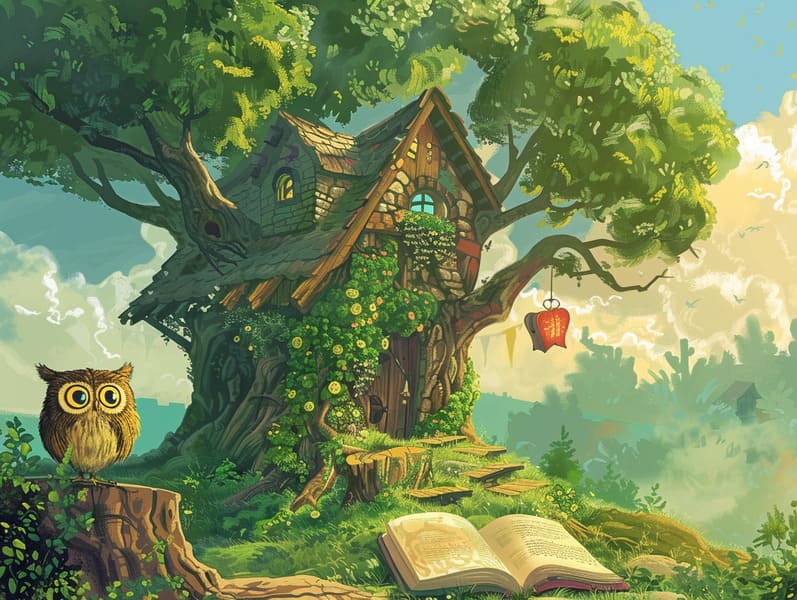The Rise of Popular Fairy Tales and Their Enduring Splendor.
The Rise of Popular Fairy Tales and Their Enduring Splendor.
Blog Article

Timeless fairy tales have historical significance. These stories have been transmitted from one generation to the next well before they were ever documented. They developed from a variety of civilizations, including Indigenous traditions. They were initially shared among older generations, often carrying themes and messages mirroring the societal norms and beliefs of the time.
The renowned Brothers Grimm, the two Grimm brothers, were among the first to compile many of these beloved tales. Their anthology, "Grimm's Children's Stories," included tales like "The Story of Cinderella," "Little Brother and Little Sister," and "The True Story of Snow White," which have since become cornerstones in the world of classic fairy tales. Similarly, Hans Christian Andersen's magical fairy tales, such as "The Mermaid," and "The Ugly Duckling," have won hearts worldwide, ensuring their place in the pantheon of beloved fairy tales.
Despite their ancient origins, traditional fairy tales remain as relevant as ever, especially as children's night stories. These fantastical tales are now available in diverse formats, including vividly illustrated books, delightful animations, and web-based fairy tales.
Their persistent charm can be traced to several delightful features:
Moral Lessons: Ancient fairy tales often whisper important moral lessons. Narratives like "The Boy Who Cried Wolf" teach the value of truthfulness, while "The Hare and the Tortoise" highlight the virtues of resolve and humility. These narratives offer young ones clear distinctions between moral and immoral, forming their moral compass in a gentle yet lasting way.
Empathy and Awareness: Timeless fairy tales frequently include beings facing trials and tribulations, motivating children to connect with their struggles and root for their triumphs. For instance, "The Tale of Beauty and the Beast" emphasizes the merit of looking beyond appearances to understand the inner being of a person, building compassion and knowledge.
Cultural Perception: Many timeless fairy tales are saturated in the cultural contexts from which they bloomed. Learning from these narratives can provide informative snapshots into different social structures, nurturing a sense of cultural understanding and respect.
Inventiveness and Fantasy: The fantasy-filled elements in ancient fairy tales—spells and potions—foster children’s dreams. These narratives lead readers to enchanted realms, awakening creative ideas and a sense of marvel that lasts a lifetime.
Traditional fairy tales are not only delightful but also illuminating. They serve as entrancing tools in strengthening various cognitive and affective skills in young ones. When timeless fairy tales are narrated, they foster speaking abilities by presenting new lexicon and complicated sentence structures. This practice also nurtures auditory skills and attentiveness, as children remain attentive, ready to see what happens next.
Furthermore, reflecting on the themes and characters of old fairy tales can improve evaluative skills and logical thinking. Kids are led to discover patterns, make predictions, and catch on to cause and effect. These conversations also boost children utter their thoughts and feelings, promoting their emotional intelligence.
In today’s modern era, the availability of web-based fairy tales has made these narratives more obtainable than ever. Web platforms and digital apps provide huge assortments of bedtime fairy tales that can be explored or listened through anytime, anywhere. Fairy tales told out loud are particularly widespread, featuring an charming way for little ones to engage with these delightful tales. Voice books and narrated videos bring characters and settings to life, often paired with fantastical background sounds and melodies that intensify the narrative experience.
The unending appeal of old fairy tales lies in their ability to modify to modern society while preserving their basic principles. Contemporary modernizations of these stories often show more different characters and modern settings, making them meaningful to today’s audience. However, the central morals of bravery, goodness, and integrity remain unchanged, continuing to reach young readers of all ages.
Ancient fairy tales also offer a sense of protection and comprehensibility. They render a well-arranged narrative with a plain beginning, middle, and end, often closing with the ending of conflicts and the triumph of honesty over deceit. This uniformity can be placating for young readers, spreading a sense of constancy in an ever-changing world.
Ancient fairy tales continue to allure and train new generations, maintaining their beauty and pertinence in modern society. As bedtime stories for kids, they impart upon a perfect blend of wonder and wisdom, aiding moral values, empathy, and creativity. The availability of digital fairy tales and the likability of fairy tales spoken assure that these old stories remain attainable to new generations.
By upholding and divulging these stories, we continue to value the rich tapestry of narrative artistry and cultural heritage. Whether you are exploring a beautifully illustrated book, viewing a internet collection, or listening through an spoken story, the elegance of classic fairy tales is always within reach. These fairy tales emphasize of the persistent power of fairy tales and its ability to join check it out us across centuries and lands.
If you are exploring a beautifully illustrated book, discovering a cyber library, or listening to an read-aloud book, the enchantment of traditional fairy tales is always within reach.
These fairy tales demonstrate of the unchanging effect of narratives and its ability to unite us across time and space, forging a link that delights and instructs alike.